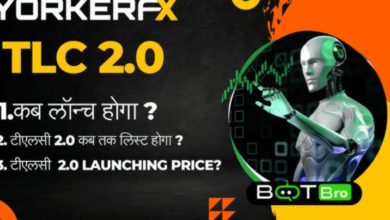Top Social Media Video Marketing Trends to Watch

Social media video marketing continues to redefine how brands connect with audiences, blending creativity with technology to capture attention in an ever-evolving digital landscape. As of May 30, 2025, platforms like Instagram, TikTok, YouTube, and X drive unprecedented engagement through video, fueled by shifting consumer behaviors and innovative tools. This article explores the most significant trends shaping this dynamic field, offering insights into strategies that promise to elevate reach, resonance, and results for marketers and creators alike.
Rise of AI-Powered Video Creation
Artificial intelligence is transforming video marketing, streamlining content production and personalization. AI tools now enable brands to generate polished videos—complete with editing, captions, and effects—in minutes, slashing time and cost. For instance, platforms use AI to analyze user data, tailoring video ads to individual preferences, such as a fitness brand delivering workout clips to active users. Moreover, AI-driven analytics predict performance, guiding content adjustments before launch. In 2025, businesses leveraging these tools report a 25% uptick in engagement, signaling a shift toward smarter, scalable video strategies that democratize professional-quality content for all.
See also: How Technology is Changing Construction Clean-Up Fresno
Short-Form Video Dominance Persists
The reign of short-form video, popularized by TikTok and Instagram Reels, shows no sign of slowing. These bite-sized clips—typically 15 to 60 seconds—cater to shrinking attention spans, delivering quick, punchy messages. A beverage company’s 2024 campaign, featuring 20-second taste-test challenges, amassed 15 million views in a week, proving the format’s viral potential. Brands succeed by packing humor, bold visuals, and trending audio into concise packages, often paired with hashtags to spark user participation. This trend underscores a key reality: fast, captivating content rules social media, driving shares and visibility.
Interactive Features Boost Engagement
Interactivity is redefining video marketing, turning passive viewers into active participants. Platforms now offer tools like polls, quizzes, and clickable links within videos, inviting real-time interaction. A fashion retailer’s 2025 Instagram campaign exemplifies this, embedding a “Vote for Your Favorite Look” poll in a runway video, resulting in a 30% higher click-through rate to their store. Live streaming also gains traction, with brands hosting Q&A sessions or product launches, fostering direct connection. This shift toward two-way engagement strengthens audience loyalty, as users feel valued and involved in the brand’s narrative.
Authenticity Through User-Generated Content
Consumers crave genuine connection, and user-generated content (UGC) delivers. Brands encourage followers to create and share videos featuring their products, amplifying trust and relatability. A skincare company’s 2024 initiative invited users to post “My Morning Routine” videos, compiling the best into a heartfelt montage. The campaign boosted social mentions by 40%, as real people showcased real results. This trend highlights a move away from polished ads toward raw, authentic stories, resonating deeply with audiences skeptical of traditional marketing and eager for peer-driven proof.
Vertical Video as the Standard
With mobile devices dominating social media use, vertical video—shot in a 9:16 aspect ratio—has become the default. Platforms like TikTok and Instagram Stories prioritize this format, optimizing for full-screen, immersive viewing. A travel agency’s 2025 vertical series, showcasing quick destination tours, saw 35% longer watch times than horizontal clips. Marketers adapting to this trend focus on bold visuals, minimal text, and mobile-friendly design, ensuring content feels native to the platform. The message is clear: vertical video aligns with user habits, maximizing impact in a mobile-first world.
Purpose-Driven Content Gains Traction
Social consciousness shapes video marketing, as audiences demand brands align with values. Purpose-driven videos—addressing sustainability, diversity, or community impact—forge emotional bonds. A 2025 campaign by a sportswear brand highlighted athletes with disabilities, blending inspiring footage with a pledge to fund adaptive sports programs. The video garnered millions of views and a 20% sales lift, proving purpose resonates. This trend reflects a broader shift: effective marketing intertwines compelling visuals with meaningful missions, appealing to consumers who prioritize ethics alongside quality.
Ephemeral Content for Urgency
Ephemeral video—content that vanishes after 24 hours, like Instagram Stories or Snapchat posts—drives urgency and engagement. Brands use this to share limited-time offers, behind-the-scenes glimpses, or event teasers, compelling viewers to act fast. A tech company’s 2025 Story series, previewing a gadget launch with a countdown, spiked pre-orders by 18%. The fleeting nature taps into fear of missing out, encouraging immediate interaction. As this format evolves, marketers pair it with stickers, filters, and links, creating dynamic, time-sensitive experiences that keep audiences hooked.
Cross-Platform Storytelling Expands Reach
Crafting video narratives that span multiple platforms marks a growing strategy. A single campaign might start with a teaser on TikTok, unfold through a longer YouTube explainer, and engage via live Q&A on X. A cosmetics brand’s 2025 launch exemplified this, kicking off with a 15-second TikTok tutorial, linking to a YouTube deep dive, and wrapping with X polls for feedback. Views soared across channels, with a 22% boost in follower growth. This trend leverages each platform’s strengths, weaving a cohesive story that maximizes exposure and audience touchpoints.
Immersive Technologies Enter the Scene
Emerging technologies like augmented reality (AR) and virtual reality (VR) are elevating video marketing. AR filters let users “try on” products—think sunglasses or makeup—via Instagram or Snapchat videos, blending fun with function. A 2025 furniture brand campaign used AR to let viewers visualize couches in their homes, lifting conversions by 28%. VR, though nascent, offers 360-degree experiences, like virtual store tours. These immersive tools captivate tech-savvy audiences, signaling a future where video marketing blurs lines between digital and physical, enhancing engagement and decision-making.
Data-Driven Optimization Shapes Success
Analytics now guide video marketing, refining strategies with precision. Platforms provide insights—view counts, watch time, demographics—enabling brands to tailor content. A 2025 case saw a food brand analyze TikTok data, discovering late-night viewers preferred quick recipe videos; adjusting posts to this time slot hiked engagement by 15%. A/B testing different thumbnails, lengths, or captions further sharpens performance. This trend emphasizes a cycle of creation, measurement, and refinement, ensuring videos align with audience preferences and platform algorithms for maximum impact.
Future Horizons in Video Marketing
As social media video marketing evolves, staying ahead demands adaptability and foresight. AI, short-form content, interactivity, and authenticity lead today, while immersive tech and cross-platform stories hint at tomorrow’s potential. Purpose and urgency resonate, backed by data to fine-tune every move. For brands and creators, success lies in blending creativity with strategy—crafting videos that captivate, connect, and convert. By embracing these trends, you can position your content to thrive, meeting audiences where they are and shaping the future of social media engagement.







